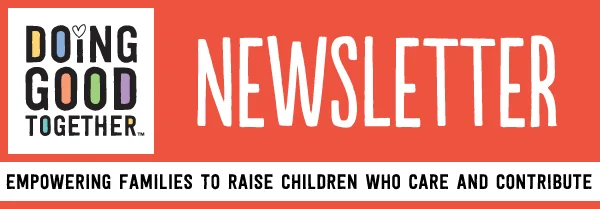BEING YOUR CHILD'S EMOTIONAL TUTOR
By helping children to name and understand their emotions, you give them tools to cope with their feelings all their lives. In fact, being our child's emotional "tutor" is one of our most important jobs as adults. Understanding feelings - one's own and those of others - is a critical first step in becoming empathetic and thoughtful. The ultimate goal is for children to learn to conduct themselves appropriately - even when adults aren't around. We provide some fun ways to help kids respond to difficult situations and make sense of their emotional world.
-Jenny Friedman, Executive Director
FOSTERING EMOTIONAL LITERACY
Make a Difference.....
- Play with our Feelings Flashcards from our Big-Hearted Families site. Try our suggested game ideas or make up your own.
- List "reaction" strategies. With your children, list strategies for coping with difficult emotions. Brainstorm activities that might ease an unpleasant feeling without resorting to hurtful reactions. In addition to anger, come up with strategies for dealing with nervousness, anticipation, boredom and more. ("I can stomp my feet when I'm angry; I can draw a comic strip when I'm bored.") You might be surprised at how different family members settle themselves. Keep the list handy for when tough emotions arise.
- Illustrate abstract emotions. Have your children draw what different emotions look like. They might draw forceful red lines for anger, or smooth, wavey lines for calm. This activity can initiate interesting conversations about the power of those big feelings.
- Test your instincts. Take this quiz to see how well you read people's facial expressions. This might be a bit tough for younger kids but a fun way topractice.
HELPING CHILDREN MANAGE THEIR EMOTIONS
Talk About It.....
The great thing about feelings is that there are so many opportunities for some BIG conversations. While it's good to discuss how your child or another person is feeling in the moment, it is also important to talk about feelings when your child is not caught up in emotion.
- Talk about experiences after they have happened and reflect together on all the ways you and your child responded well, and/or how the situation might be handled differently in the future. If there was a conflict, make sure to acknowledge both sides of the story.
- When reading with your child, discuss the characters' emotions. Ask questions about how different characters might be feeling.
- Remind kids (and yourself!) that everyone has different "triggers" that ignite those big feelings. Talk about what sets you off, and what you notice gets others going. It can help us be more compassionate when we realize that we all find certain things a challenge to face.
Learn About It.....
The Way I Feel by Janan Cain. Ages 4-8. This story, in silly verse, will help children identify and express a range of emotions.
The Feelings Book by Todd Parr. Ages 3-6. With vibrant colors, fun illustrations and simple language, Parr presents emotions from the conventional ("Sometimes I feel cranky") to the silly ("Sometimes I feel like standing on my head").
If you have older kids, think about all the "feeling" words out there. Check out EQI.org for a list of words and other great information on emotional intelligence.
Watch these fun videos by Start Empathy that explore various aspects of empathy.
INSPIRATION
"Deal with the faults of others as gently as with your own."
-Chinese proverb

